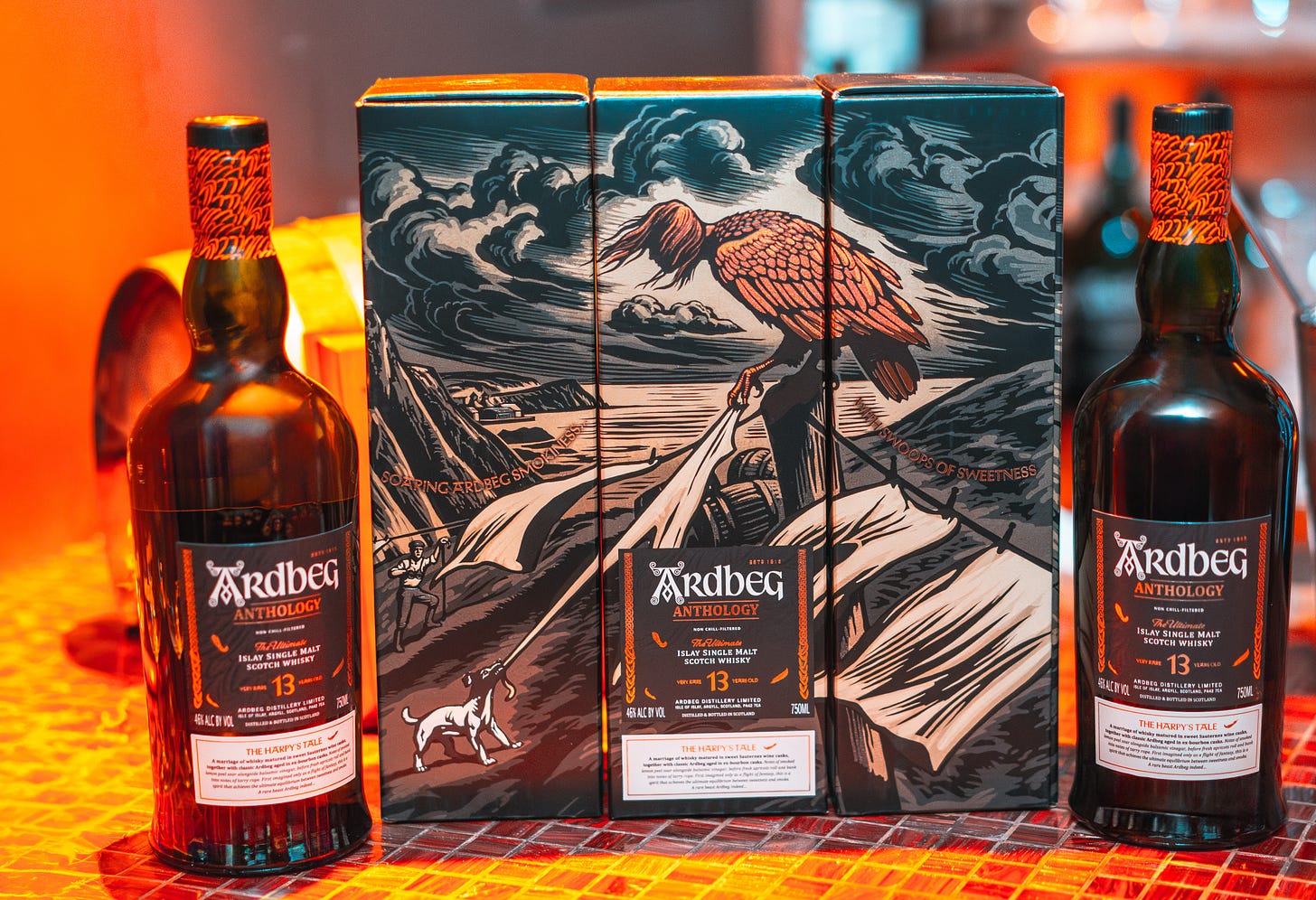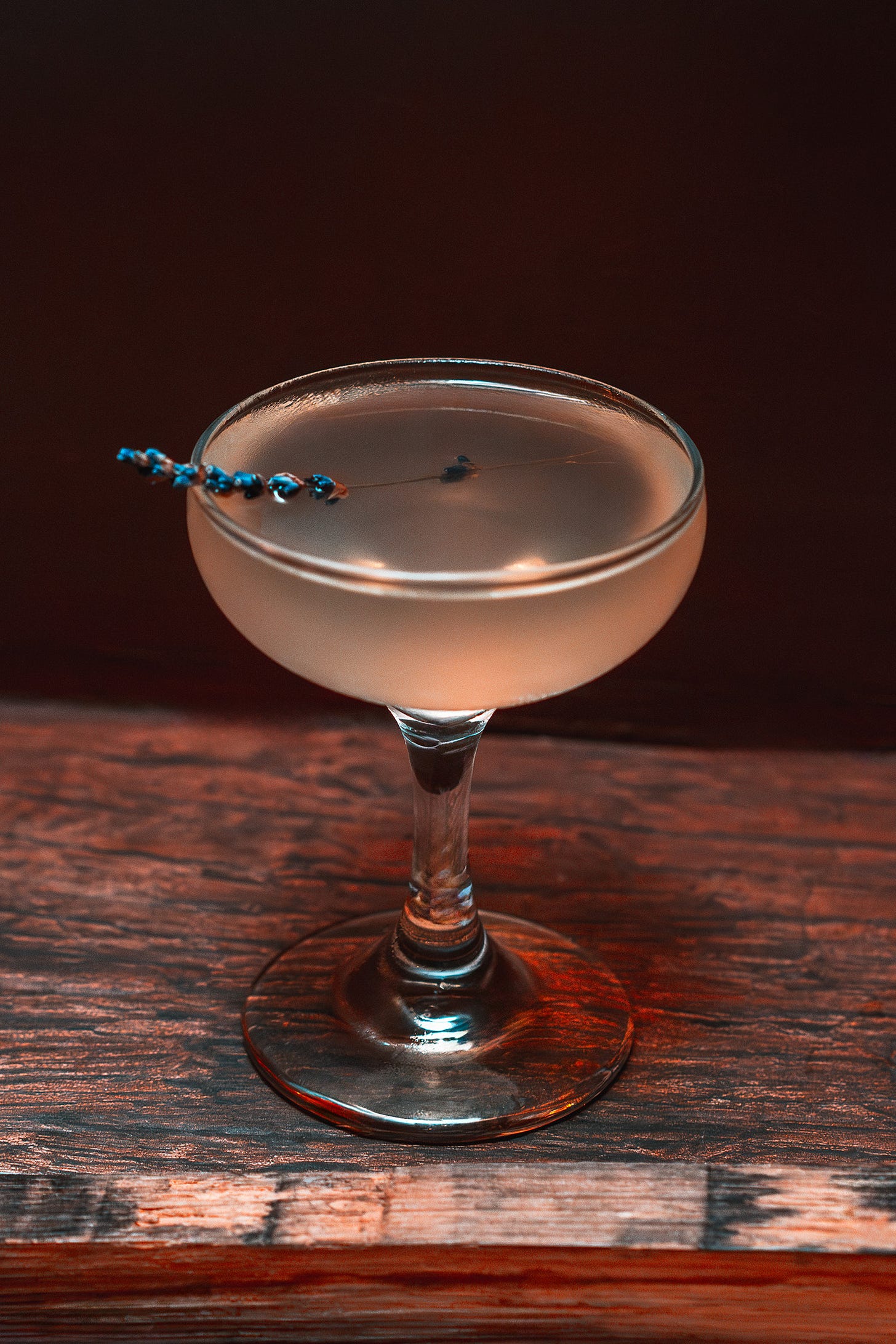
The world of whisky drinkers can be divided in two (superficially, at least): you either love or hate peaty scotch.
Peat is a distinctive and frequently divisive flavor profile found in scotch whiskey. This unique element comes from the densely compressed, ancient vegetation that was traditionally used for fuel in the rural and remote areas of Scotland.
In the whisky-making process, peat is employed to dry barley, infusing it with the distinctive smoky and delicious medicinal characteristics that define Islay Scotch Whisky.
When barley is dried using peat, its husk absorbs phenols, a group of chemical compounds responsible for the pronounced peaty and smoky flavors we associate with certain whiskies. These phenols are quantified in a measurement called “parts per million”, or “PPM”, and even a small amount can significantly influence the whisky's taste and aroma.
Still with us? Good. Back to the fuel: peaty whisky will make you either race away from the source or towards it.


Last Wednesday (Sept 13th) the Brand Newsroom team was privileged to attend an official tasting of Ardbeg’s two newest expressions: the 13 year old Harpy’s Tale and multi-layered Traigh Bahn 19 Year Old Batch No. 5.
Ardbeg, the Islay whisky known best for its playfully branded “smoke-forward” peaty bottlings, used the gathering to introduce its newest products and to offer two intriguing cocktails, the Harpy’s Handler and the Sauterne Old Fashion [see recipes below].
Concocted from offerings in Ardbeg’s core range, Ardbeg 10 Years Old and Wee Beastie, the cocktails were resonant with the flavors found in the latest batches., the cocktails were resonant with the flavors found in the latest batches. What strange magic was this?
Ardbeg’s official tasting was held in the swanky and intimate downstairs lounge at TriBeCa New York’s refined spirits den, Brandy Library. The program was guided by Ardbeg National Brand Ambassador Cameron George, who held forth on the special qualities of each of the new series.
Shortly after his presentation, Brand Newsroom caught up with Cam and asked him to elaborate with some discussions about luxury, taste, creativity and cocktails —not necessarily in that, or in any, order! (The following conversation has been edited for length.)


Brand Newsroom: Looking at the brand itself, Ardbeg —we know the smoke is always what we love about it, what we associate with it. Has Ardbeg’s brand positioning done anything different with these latest bottles?
Cam George: To us at Ardbeg, smoke isn't necessarily a one-dimensional flavor. To us, it's five families of flavors that live underneath the same umbrella. Smoke can be broken down into savory,herbal — or coal, medicinal or woody.
Take the 19 batch 5, This batch is very savory but quite herbal at the exact same time. There's also a cool conversation of what happens when you age a heavily peated whiskey.
Especially for 19 years. That is, it's a long time, especially in whisky years. In New York, at least, it’s almost old enough to drink itself.
It is a long time. But Ardbeg, as it continues to mature out, usually gets this tropical kind of underpinning to it, especially in American Oak. You don't see that really present in Wee Beastie, maybe slightly in Ardbeg 10 years old. But in the 19s, it comes in full force and I love that.
When you think of those aged spirits, it evokes a sense of luxury as opposed to “everyday drinking.” Is there also a luxury aspect to the way you’re marketing the 19? Are you positioning it as a “refined sipper” or as a special gift for a whiskey collector? Or are you also thinking of it in cocktails?
The way that we've approached the cocktails we've had this evening, they should evoke emotions and flavors that you saw represented in the new whiskys that you just tasted, without necessarily having to use those whiskys themselves.
You don’t need to utilize Ardbeg 19 in cocktails — although, again, I'm a firm believer that if it's in your glass, if it's in your bottle, that is your whisky and you do what you want with it. But I'd also be a proponent of cost efficiency. If you're drinking a bar cocktail with Ardbeg 19, it’s going to run you a couple of dollars, right? [The 19 is being sold at several retailers in the neighborhood of $300 per bottle— Brand Newsroom]
That's what we were wondering!
I also believe the rules of luxury are being rewritten. It's not necessarily the most expensive item that’s the most luxurious thing. The rules of luxury are now creativity based.
So Ardbeg 10 (which was used in Harpy’s Handler, recipe below! — Brand Newsroom) can be considered a luxury item because it is distinctly a bespoke Ardbeg product. It communicates who we are. But it also allows you, as the end consumer, to add your own identity to it.
And that to me is what luxury should be — the story of one house and one Maison, but then also the story of you as an individual as well and how you choose to wear or drink something that is so perfect.
We’re glad you mentioned the Harpy’s Handler. We initially thought, “Wow, this tastes like a great daiquiri, as opposed to a whiskey sour. We also thought the cocktail tasted like it had mezcal!
Now, mezcal has become a lot more popular in the last few years. Mezcal is often associated with smoke as well. Are you aiming Ardbeg squarely at the mezcal market?
The Ardbeg daiquiri is actually the cocktail that we utilize to get trade, press and influencers into Ardbeg. There's a fantastic lime underpinning that's very apparent in most of the Ardbeg whiskeys. To me it is not lemon, it's lime peels specifically.
So the Ardbeg daiquiri is near and dear to my heart. This cocktail, the Harpy’s specifically, uses Ardbeg 10 Years Old, a little bit of gin, lemon juice, sauterne, and then lavender bitters.
I really like that because the lemon and the sauterne — there's a relationship there to be explored. The gin and lemon are best friends as well. And Ardbeg and gin are also really good buddies too. That cocktail just worked on all fronts. Naturally, I love it.
You were saying that people shouldn't put ice in a whiskey like the Ardbeg 19. Is it because if it's older it'll bruise? Does a younger expression, like the Ardbeg 10 year in the Harpy’s Handler hold up better?
That's a difficult question. Whisky is a solution, right? Yes, to all of our problems, but then also chemically.
Chemically, it is a complex solution that is ever evolving even in its glass. When you open a bottle of whiskey, it starts to evolve even more. Now the conversation of wood and oak, as it's extrapolated out over time, the oak is contributing aromatics and then also flavor contributing compounds as well.
The way that whiskys start to change in barrel, especially over a long period of time, they start to develop a fragility. So it's not necessarily that I'm concerned with the bruising, but I am concerned with the way that adding ice —effects two changes, temperature and dilution — and I can't trust that those long chain lipid fatty acids that are part of that solution are going to be really happy about having a temperature change imparted on them.
In older whiskey, I'm very hesitant to add ice to it when I'm drinking for scholastic purposes. If I'm just drinking the drink for recreational purposes or as I say in “sport mode” mode, I'm totally fine to throw ice into whatever I want. But if I’m evaluating something, I'm not going to throw ice into it because I want it as it was intended.
Harpy’s Handler
Build:
.75 oz Ardbeg 10
.75 oz gin
.5 oz Sauterne wine
.5 oz White creme de cacao
.75 oz lemon juice
1 dash lavender bitters
Method: Shaken
Garnish: Express and discard orange twist, serve with lavender sprig
Sauternes Old Fashion
Build:
2 oz Wee Beastie
.75 oz Sauternes
2 dashes Angostura bitters
2 dashes Lemon bitters
Method: Stirred
Garnish: lemon twist, thin white pear slice
And there’s more!
Special shout out to our great friend — and fellow bon vivant — Brad Thomas Parsons for inviting us to contribute our restaurant reviews to his brilliant Substack, Last Call.
Brad, like us, is based in Brooklyn, NY. He’s been writing about drinks, spirits, and bar culture since 2008 and his work has appeared in publications including Bon Appétit, Food & Wine, Travel + Leisure, Lucky Peach, Whisky Advocate, Imbibe, PUNCH, TASTE, and VinePair among others. I have been featured in The New York Times, The Wall Street Journal, The Washington Post, NPR's All Things Considered, The Splendid Table, The Martha Stewart Show, and more.
He is also the author of four books, including Bitters (James Beard and IACP Award Winner), Amaro, Distillery Cats, and Last Call (James Beard Award Finalist, Spirited Award Winner).
With Last Call, Brad succeeds in delivering weekly spirited dispatches on bars and bar culture, including essays and articles along with cocktail recipes, interviews and profiles, behind-the-scenes looks at his forthcoming book (we can’t wait!) and other projects he’s working on, particularly all things bitter. In addition, he offers entertaining and informative insights on restaurants and regional foodways, and popular culture.
Please subscribe to his excellent Substack — and tell him Brand Newsroom sent ya!








